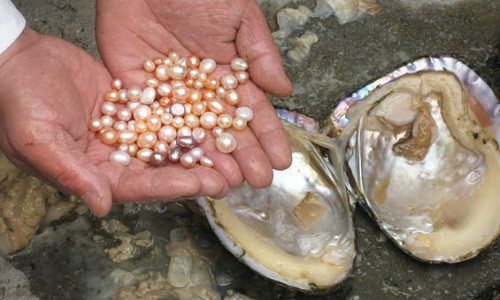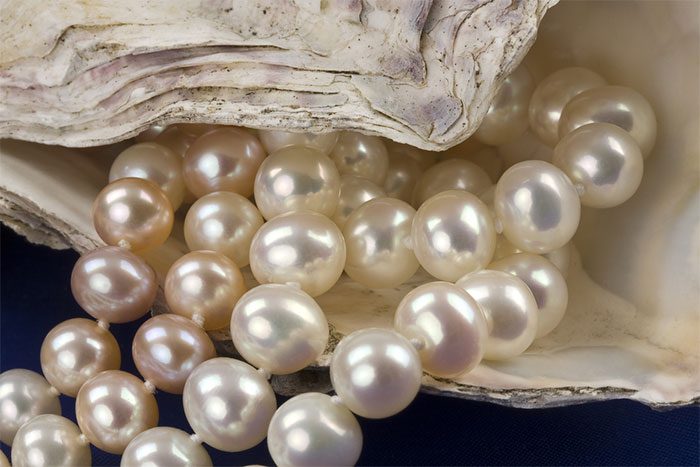The oyster secretes nacre to envelop a foreign object that enters its body, over many years forming pearls with various shapes and sizes.

Pearls.
Pearls are hard, spherical objects produced by certain organisms, primarily mollusks such as oysters. Pearls are used in jewelry and can also be ground into powder for use in cosmetics. They are regarded as a type of gemstone and are cultivated and harvested for jewelry making.
In Traditional Chinese Medicine, pearls are considered slightly sweet and neutral in nature, affecting the heart, liver, and kidneys. They are believed to help treat convulsions, calm the mind, detoxify, alleviate cloudiness in vision, resolve tear duct blockages, relieve tinnitus, and prevent dizziness…
People often think pearls come from grains of sand, but the process is not that simple.
Here is how pearls are formed:
Pearls form through the defensive mechanism of mollusks. Simply put, when a foreign object (often a small organism or grain of sand) slips past the shell and invades the soft body of the oyster or clam, they secrete aragonite or calcite minerals which are bound together by conchiolin, an organic substance. This combination creates what is known as nacre. The purpose of nacre is to envelop the foreign object so that it does not harm the oyster or clam. This process of layering nacre repeats and gradually builds up into the shiny pearl we commonly see. This protective mechanism inadvertently creates an endless treasure.

Pearls form through the defensive mechanism of mollusks.
Calcite and aragonite are two crystalline structures made from CaCO3. Marine animals obtain CaCO3 from their environment and use special proteins to synthesize it into calcite and aragonite. Did you know that pearls are actually made from the same material as the rough shells that surround them?
How can this single component create such a large amount of material? Calcium carbonate, or CaCO3, is abundant on land and even richer in the ocean.
The Earth’s crust is rich in calcium, and over millennia, these sediments have seeped into rivers and oceans. This is especially true near hydrothermal vents, where hot seawater mingles with calcium-rich basalt. Meanwhile, when carbon dioxide in the atmosphere interacts with seawater, it eventually produces dissolved carbonate.
Every year, the oceans absorb about one-third of our carbon dioxide emissions, adding a substantial amount of carbonate to the water. It’s no surprise that marine organisms have utilized these abundant compounds, but the way calcium and carbonate combine into surprisingly artistic forms is fascinating.
Pearls come in various shapes and colors, but black pearls are only found in the South Pacific. Due to high demand, the jewelry industry has developed methods for producing cultured pearls. It takes a lot of effort to create these tiny gems.


















































